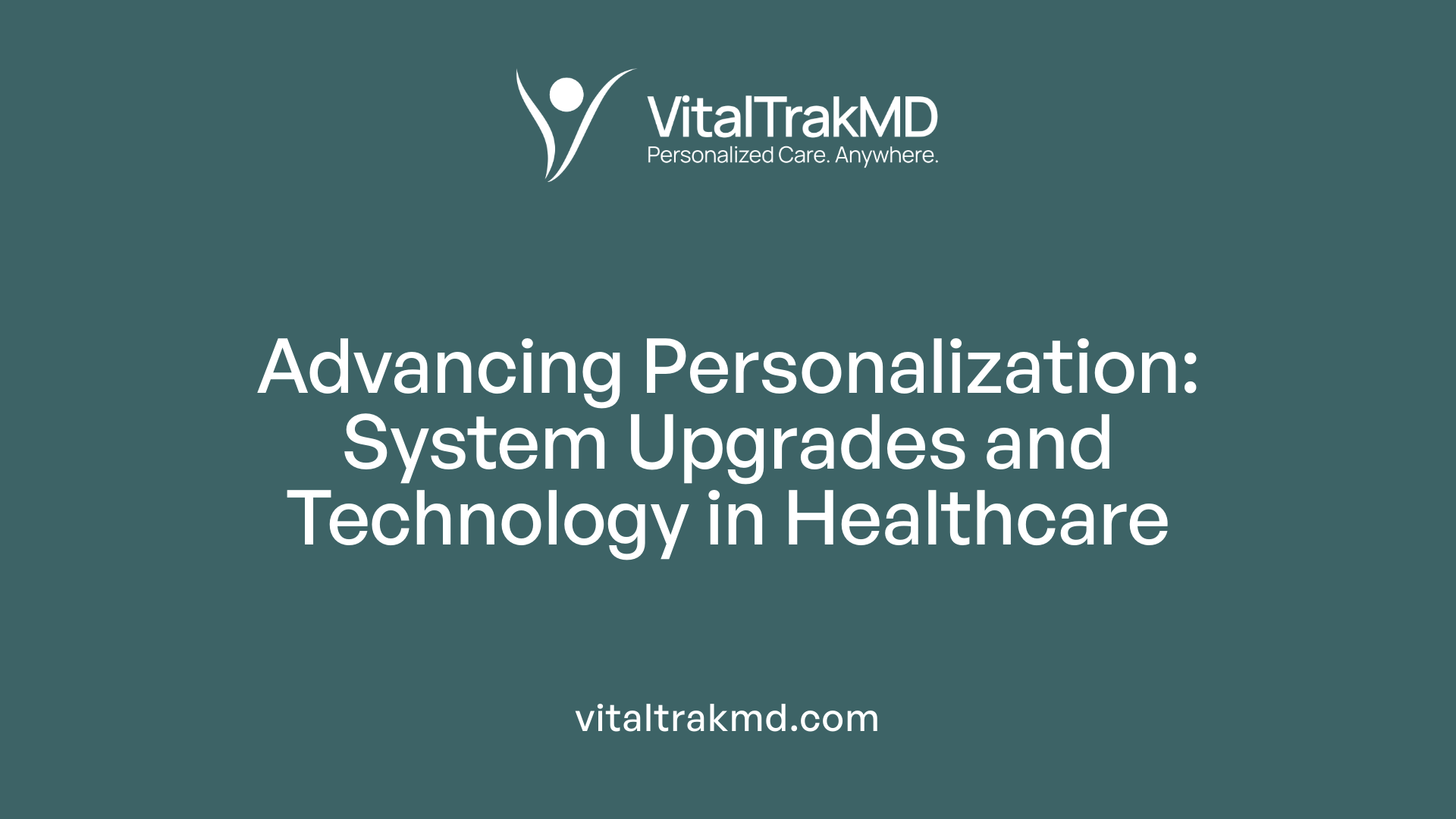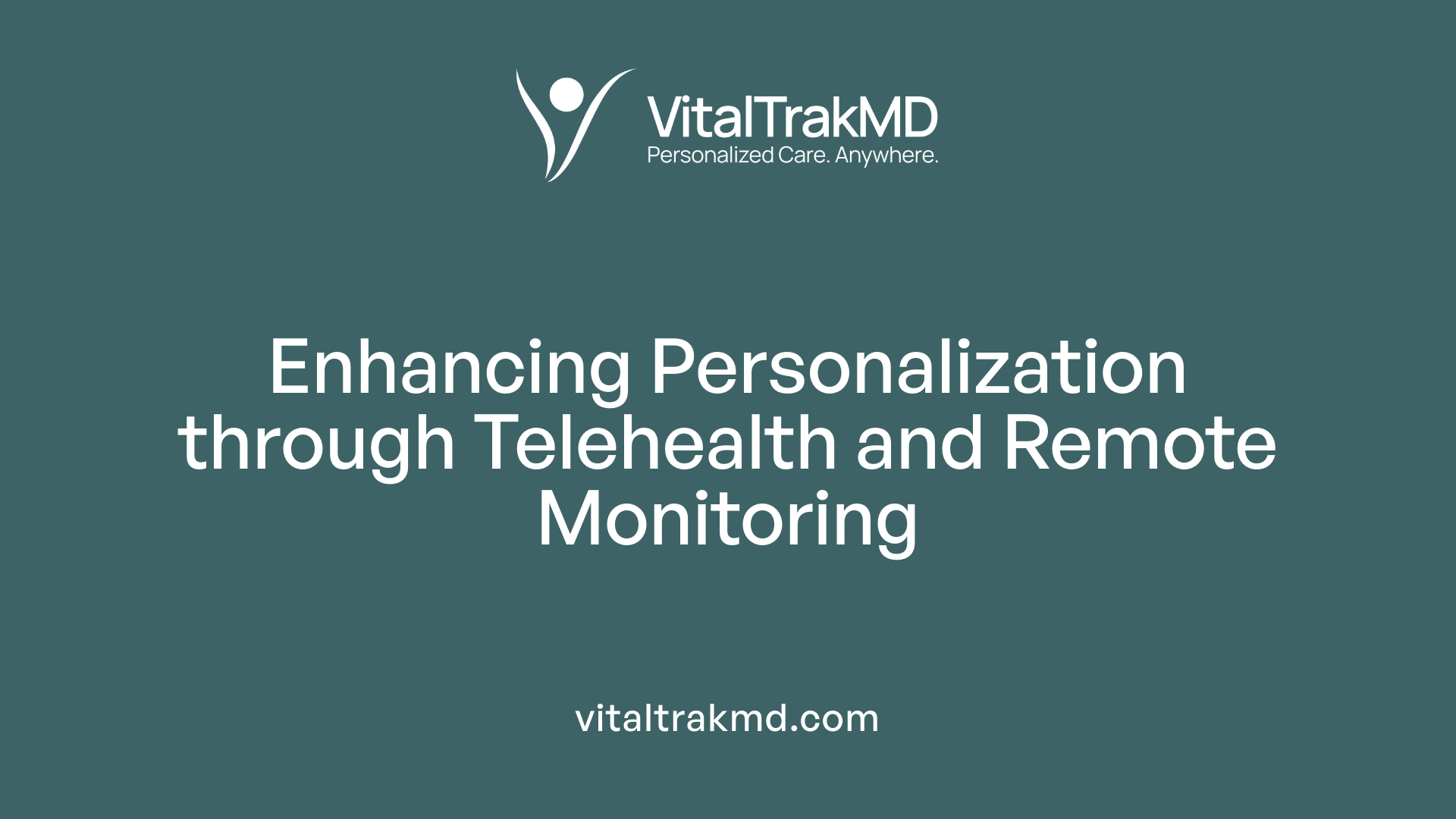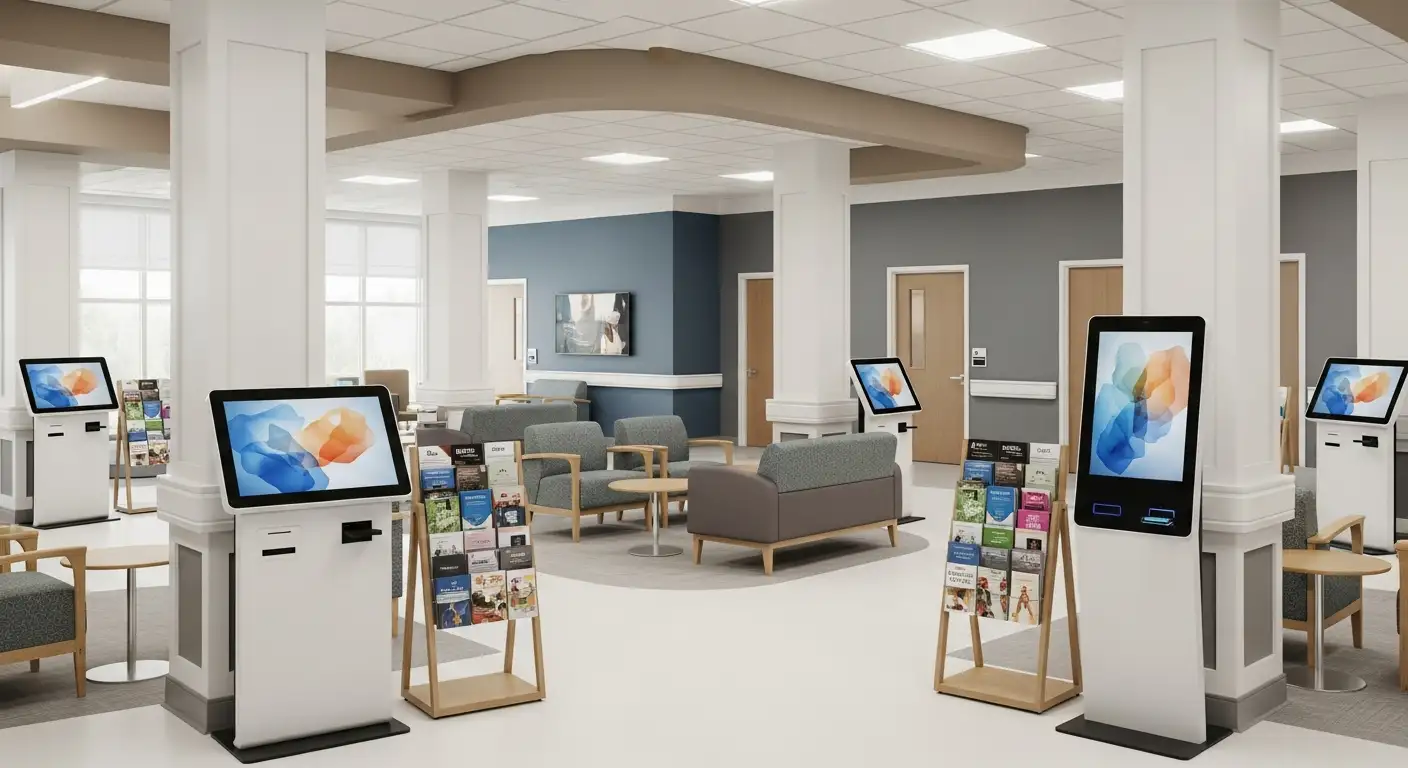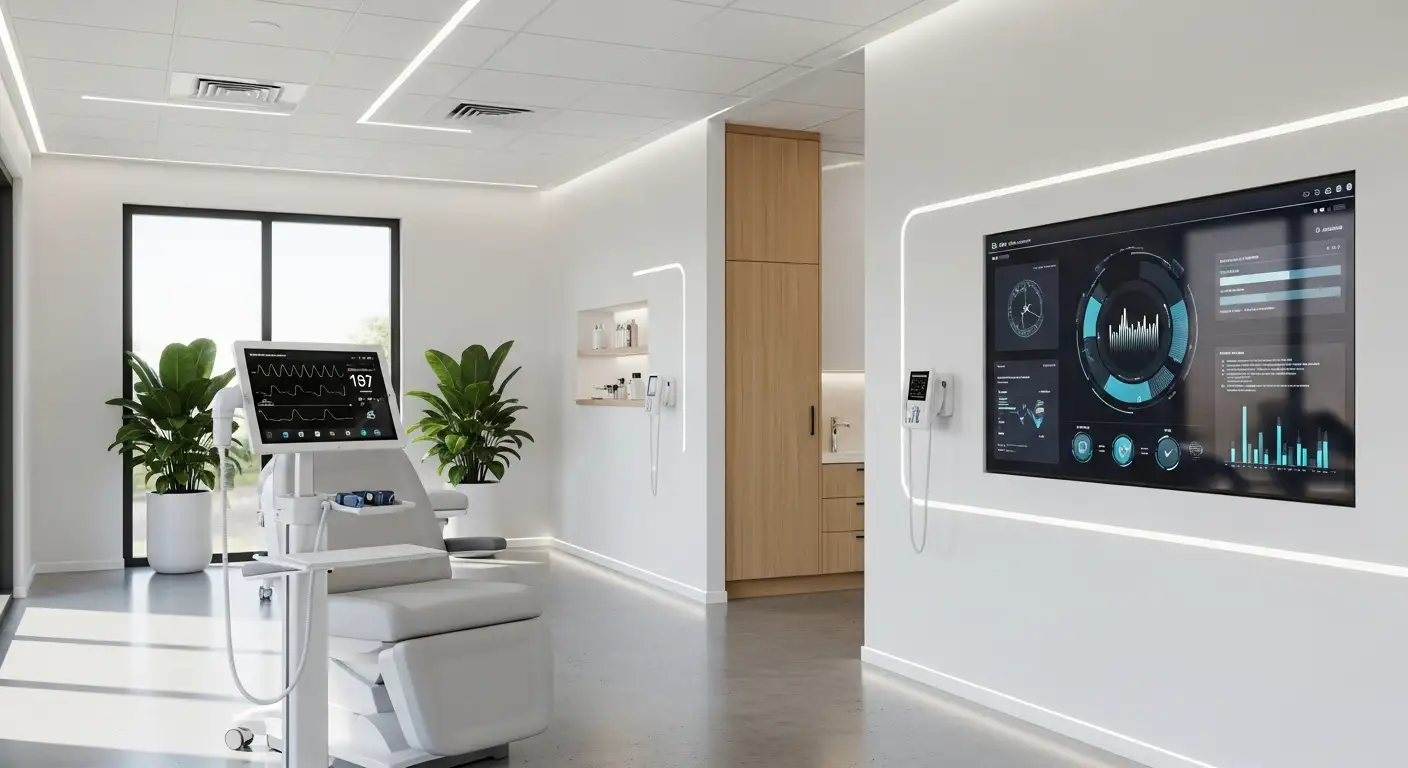Tired of Repeating Your Medical History? Try Personalized Care

Reimagining Healthcare Through Personalization
Many patients grapple with the exhausting cycle of repeatedly sharing their medical histories across various healthcare settings. Despite technological advancements like electronic health records, healthcare often remains standardized and impersonal. This article explores how personalized care, driven by collaborative planning and technological innovation, can reduce patient frustration, improve health outcomes, and lead to more efficient, patient-centered systems.
What is Personalized Care Planning and Its Benefits

What is personalized care planning?
Personalized care planning is a collaborative process where healthcare providersAnd patients work together to understand and manage a chronic condition. It involves discussing problems related to the patient's health, setting shared goals, and developing tailored actions to achieve better health outcomes. This approach emphasizes individual needs, preferences, and circumstances, ensuring that care is not only effective but also aligned with the patient’s lifestyle.
How does personalized care planning benefit long-term or complex health conditions?
For patients with long-term or complicated health issues, personalized care offers significant advantages. It helps in early detection of potential problems, improves disease management, and reduces the risk of complications. Tailoring prevention strategies, diagnostics, and treatments based on the patient’s genetic makeup, habits, and environment enhances the effectiveness of healthcare interventions.
Evidence from multiple trials involving over 10,000 participants shows that personalized care planning leads to small yet meaningful improvements in health outcomes. Patients experience better control of blood glucose and blood pressure, reductions in depression symptoms, and improved ability to manage their conditions more confidently.
Moreover, care plans that are multi-stage, intensive, and well-integrated into routine care tend to have a greater impact. This integrated approach ensures continuous adjustment of treatment strategies, keeping pace with disease progression or changing circumstances.
Impact on physical, psychological, and self-management outcomes
The benefits of personalized care extend across various dimensions:
| Dimension | Improvements Observed | Details and Examples |
|---|---|---|
| Physical Health | Better blood glucose control, lower systolic blood pressure | Improved management of diabetes and hypertension |
| Psychological Well-being | Reduced symptoms of depression | Enhancing mental health alongside physical health |
| Self-Management Skills | Increased confidence and ability to manage conditions | Patients become more engaged and adhere better to treatment plans |
Overall, personalized care planning fosters a more engaged, informed, and healthier patient population. It builds trust, addresses individual needs, and can contribute to improved health quality and satisfaction.
Are there any risks or downsides?
Studies show no evidence of adverse effects from implementing personalized care planning. When properly conducted, it is a safe approach that complements existing healthcare systems without increasing harm.
Final thoughts
While the benefits are modest, the cumulative impact of personalized care planning can be substantial. It transforms traditional, standardized healthcare into a more responsive, patient-centered model—supporting adults with long-term health conditions to enjoy better health and improved self-management skills.
This evolving approach is further empowered by advances in health technology, genomics, and data integration, promising even greater personalization for future healthcare delivery.
The Burden of Repeating Medical Histories and the Role of Technology

Why do patients often have to repeat their medical histories?
Patients frequently find themselves recounting their medical histories multiple times across various healthcare settings, such as emergency rooms, hospitals, primary care clinics, and specialist offices. This repetition is often driven by the need for healthcare providers to gather specific diagnostic or treatment information, verify medication lists, and ensure they haven’t overlooked any symptoms or conditions.
Despite the widespread use of electronic health records (EHRs), many healthcare systems still rely heavily on protocols that do not fully account for individual differences. This results in repeated storytelling to verify information and maintain accuracy.
Additionally, gaps in provider-to-provider communication and fragmented data storage across multiple platforms contribute to this challenge. Patients may need to re-tell their stories because their health information isn't seamlessly shared or updated across different care providers, adding to their frustration and risking overlooked details.
How do electronic health records help?
EHRs have significantly improved the sharing and storage of patient information, leading to fewer repetitions of medical histories. They facilitate quicker access to consolidated health data, including medication lists, lab results, previous diagnoses, and treatment plans. This better information flow supports continuity of care and helps providers make more informed decisions.
However, despite these advancements, issues such as interoperability gaps between systems remain at large. Many EHR platforms are not fully compatible, preventing smooth data exchange. This limits their effectiveness in eliminating redundant storytelling.
Innovations like AI-driven automation are emerging to address these gaps. Such systems can automatically identify relevant details about a patient’s history, streamline prep work for procedures like surgeries, and suggest which information needs updating. This makes the process more tailored, reducing unnecessary repetition and improving overall efficiency.
What are current limitations of health data management?
Though technology has advanced, healthcare still faces several hurdles in managing health data effectively. Fragmented records across different providers and systems create silos of information, making it challenging to compile a complete picture of a patient’s health.
Handling vast amounts of data raises concerns about privacy and security, especially when dealing with sensitive health information. Transitioning from paper-based records to electronic systems also posed challenges, including workflow disruptions and technical difficulties.
Interoperability— the ability of different healthcare systems and platforms to communicate seamlessly—remains a major obstacle. Variations in data entry standards, legal restrictions on long-term record retention, and resource limitations further hamper efforts to create a cohesive, accessible health record infrastructure.
These issues contribute to ongoing redundancies and inefficiencies in chronic disease management, ultimately impacting patient safety and the quality of care provided.
Patient-Provider Communication Challenges and How to Address Them

What challenges do patients face in communicating their medical histories?
Patients often encounter multiple obstacles when sharing their medical histories with healthcare providers. One common difficulty is providing complete and precise information. Patients may struggle with language barriers, health literacy limitations, or misunderstandings about medical terminology, leading to inadvertent omissions or inaccuracies. Such gaps can affect diagnosis and treatment plans.
Another significant challenge is the perceived quality of listening and empathy from clinicians. When patients feel that their concerns are not heard or understood, trust can diminish, making them less willing to share sensitive or important details. Cultural differences also play a role; some patients may hesitate to disclose certain health issues due to cultural beliefs or fear of judgment.
Structural system issues within healthcare settings contribute to these communication barriers. Short appointment times, high patient loads, and lack of supportive resources restrict clinicians’ ability to gather comprehensive histories. When patients have to repeat their health stories multiple times across different providers, it can cause frustration and lead to overlooked details.
Effective communication is crucial because it directly impacts diagnostic accuracy, treatment adherence, and overall patient satisfaction. To improve this, healthcare practices can implement strategies such as extended consultation times, interpreter services, and training in cultural competency.
How can improving patient-provider communication enhance healthcare outcomes?
Implementing better communication methods ensures that patients feel valued and understood, fostering trust and openness. This encourages more honest disclosures, which improve the accuracy of diagnoses and the effectiveness of treatments.
Practices like active listening, empathetic responses, and confirming understanding can help bridge cultural and language gaps. Additionally, utilizing patient-centered care approaches, such as shared decision-making, enhances engagement.
Technology also offers solutions. Electronic health records (EHRs) and patient portals allow patients to input their histories beforehand, reducing time constraints during visits. Clear, straightforward educational materials can improve health literacy, empowering patients to communicate more effectively.
Overall, addressing both systemic and interpersonal challenges in communication significantly benefits health outcomes by fostering a collaborative environment where patients feel confident and supported in sharing their health information.
Strategies for Patients to Maintain and Share Records Effectively
How can patients effectively maintain and share their medical histories?
Managing medical records is crucial for ensuring that healthcare providers have accurate, comprehensive information to deliver optimal care. Patients can start by keeping detailed and organized records of their health information, including vaccination histories, lab results, surgical procedures, medication lists, and notes from specialists.
Utilizing digital tools can streamline this process. Electronic personal health records (PHRs), mobile health apps, and secure online portals allow patients to store and access their health data conveniently. These tools often feature encryption and security measures to protect sensitive information, aligning with privacy laws like HIPAA and PHIPA.
Regular updates are essential; patients should add new test results, medication changes, or recent hospital stays to keep records current. Carrying physical copies or digital backups can be invaluable during emergencies, travel, or when consulting new healthcare providers.
Understanding your rights regarding health information is equally important. Under laws such as HIPAA, patients have the right to access and obtain copies of their medical records, request amendments, and control disclosures. Communicating these preferences clearly to healthcare providers helps ensure that information sharing aligns with your wishes.
Healthcare professionals are responsible for safeguarding patient data, obtaining informed consent before sharing information, and adhering to strict confidentiality guidelines. Patients should work with providers to clarify how their information will be used and shared.
By actively managing and understanding their health data, patients facilitate better communication with healthcare teams, support accurate diagnoses, and can swiftly provide vital information in urgent situations. Maintaining secure, organized records ultimately empowers patients to participate actively in their healthcare journey.
Reducing the Burden of Repeated Histories and Enhancing Continuity of Care
How can patients reduce the burden of repeatedly providing their medical histories?
Patients often face the challenge of retelling their medical history multiple times across different healthcare settings such as emergency rooms, clinics, and specialist offices. This repetition can be frustrating and emotionally taxing, especially during stressful health episodes.
One effective strategy is for patients to maintain comprehensive and current personal health records. Digital health portals and electronic health records (EHRs) enable secure sharing of medical information between healthcare providers, reducing the need for repetitive storytelling. Structuring their health information clearly—such as detailing past illnesses, surgical histories, medications, allergies, and self-care routines—enhances recall and accuracy.
Visual aids, written summaries, and multimedia recordings can also support better communication, especially for individuals with low health literacy or cognitive difficulties. These tools can help patients remember and convey important details effectively.
Building a trusting relationship with healthcare providers fosters openness and encourages patients to share complete information confidently. Culturally sensitive communication promotes understanding and respect, leading to more personalized and efficient care.
Moreover, advocating for standardized and unique patient identifiers within healthcare systems can significantly minimize duplicate records. When systems recognize the same individual across multiple providers, their medical history remains continuous and complete, improving care quality.
What strategies can support continuity and reduce redundancy?
Ensuring seamless healthcare involves strategies that promote information sharing and standardization across different facilities. Implementing centralized health records or maintaining personal health apps allows patients to carry a summarized version of their health data, accessible during emergencies or routine visits.
Regularly updating and reviewing medical information with healthcare providers ensures accuracy and relevance. Patients should verify that their records reflect recent treatments, medications, and lifestyle changes.
Healthcare organizations are encouraged to develop protocols that facilitate efficient data exchange, including interoperable electronic record systems that communicate across different providers and institutions. This interoperability reduces redundant testing and assessments.
Clinicians can contribute by reviewing existing data thoroughly before requesting new tests or repeating procedures. This practice not only saves resources but also minimizes patient discomfort and the risk of unnecessary interventions.
Strong communication channels and active patient engagement are fundamental to reducing redundancies. Educating patients on the importance of maintaining and sharing their health information empowers them as active participants in their care.
In summary, combining technological solutions such as digital records and standardized identifiers with proactive communication and verification practices leads to more consistent, personalized, and efficient healthcare, ultimately lessening the burden on patients and providers alike.
The Role of Technology and System Improvements in Personalization

How can technology improve personalization in healthcare?
Technology plays a transformative role in making healthcare more tailored to each individual. By integrating diverse data sources — such as genetic information, electronic health records, social and environmental factors, and patient-reported outcomes — advanced AI systems can support clinicians in making more accurate diagnoses and predicting how different treatments might work for each person.
Digital tools like wearable devices and remote monitoring systems enable continuous health tracking, helping detect potential issues early and keeping patients actively engaged in managing their conditions. Machine learning models, including deep learning and natural language processing, analyze large datasets to support personalized therapies based on genetic, phenotypic, and lifestyle differences.
Moreover, innovations like predictive analytics reduce adverse reactions and unnecessary treatments, streamlining decision-making. This technological synergy not only improves health outcomes but also enhances efficiency, making healthcare more responsive and patient-centered. Clear governance ensures these tools are used ethically, securely, and in alignment with individual needs.
What system improvements are needed to support personalized care?
To fully realize personalized healthcare, systems need significant upgrades. Developing interoperable and secure electronic health records (EHRs) is essential for seamless data sharing across multiple providers and healthcare settings. AI-driven automation can handle routine tasks — such as medication authorizations, preoperative procedures, and lab test management — reducing delays and overuse of unnecessary tests.
Implementing strong data governance frameworks is critical for protecting patient privacy and ensuring ethical use of information. Investment in robust technological infrastructure, including cloud-based platforms and integrated health information systems, enhances data accuracy and accessibility.
Additionally, providing comprehensive training for healthcare professionals ensures they can effectively utilize these advanced systems. Strategic organizational changes, combined with continuous technological innovation, pave the way for more personalized, efficient, and high-quality healthcare services.
| Aspect | Description | Supporting Details |
|---|---|---|
| Data Integration | Combining genetic, clinical, social, and patient-reported data | Supports tailored therapies and predictive analysis |
| Interoperable Systems | Seamless sharing between providers | Improves accuracy and reduces duplication |
| Automation Tools | AI for routine tasks | Cuts delays and unnecessary procedures |
| Data Governance | Privacy and ethical standards | Ensures responsible data use |
| Infrastructure Needs | Cloud platforms, analytics tools | Enhance system reliability and real-time decision-making |
| Provider Training | Education for new systems | Maximizes technology benefits |
These technological and organizational advancements are crucial for fostering a healthcare environment that is more personalized, efficient, and ultimately more effective in meeting individual patient needs.
The Impact of Telehealth and Remote Care in Personalization

How do telehealth and remote care support personalized healthcare?
Telehealth offers significant benefits in tailoring healthcare to individual patients. By extending clinical interactions beyond the traditional office, virtual visits enable providers to gain a better understanding of patients’ unique living situations, social support networks, and daily routines. For instance, seeing a patient in their home environment during a video call can reveal factors affecting their health that might be missed in a clinical setting.
Remote monitoring devices are also pivotal. These tools can track vital signs, blood glucose levels, oxygen saturation, and physical activity in real time. This continuous flow of data allows healthcare professionals to make more precise adjustments to treatment plans based on current health status, rather than relying solely on episodic clinical evaluations.
Engaging caregivers during virtual consultations adds another layer of personalization, especially for vulnerable populations like elders or those with cognitive impairments. Building rapport through visual cues and conversational interaction helps foster trust, which encourages patients to share concerns more openly.
Overall, telehealth expands access to personalized care by making it more flexible, responsive, and rooted in the patient's real-world context. It enhances communication, facilitates data-driven decisions, and supports a patient-centered approach that extends beyond the traditional clinical environment.
What are the limitations and how can these be addressed?
Despite its advantages, telehealth faces several challenges that can limit its effectiveness. One major issue is the potential for incomplete physical assessments. Certain conditions require hands-on examinations, which cannot be fully replicated remotely.
Technological barriers also pose significant hurdles. Patients lacking reliable internet access or digital literacy may struggle to use telehealth platforms effectively. This digital divide risks creating disparities, especially among underserved populations.
Data privacy and security concerns are crucial, as the exchange of sensitive health information over digital channels must comply with strict regulations. Ensuring secure platforms and transparent data policies is essential to build trust.
To overcome these barriers, healthcare providers can adopt a hybrid model, combining telehealth with necessary in-person visits for comprehensive assessment. Developing community programs that provide internet access and training can improve digital inclusion.
Additionally, implementing user-friendly interfaces and offering technical support help patients navigate telehealth tools confidently. Privacy protections should be clearly communicated to reassure users.
By recognizing and addressing these limitations, telehealth can serve as a reliable cornerstone for personalized, remote healthcare that complements traditional services.
Summarized Overview of Telehealth in Personalization
| Aspect | Benefits | Challenges | Solutions |
|---|---|---|---|
| Virtual visits | Improve communication, observe environment | Limited physical examination | Hybrid model, in-person follow-up |
| Remote monitoring | Real-time health data, tailored therapy | Technology access, data security | Community programs, secure platforms |
| Patient engagement | Foster trust, gather patient perspectives | Digital literacy gaps | Training, tech support |
| Accessibility | Expanded reach, flexible scheduling | Digital divide, privacy concerns | Infrastructure investment, clear policies |
This table encapsulates how telehealth enhances personalized care while highlighting the strategies to tackle existing obstacles. As digital health continues to evolve, its integration promises more adaptable, patient-centered healthcare experiences.
Embracing the Future of Healthcare
As healthcare continues to evolve, prioritizing personalized approaches that leverage technology, collaborative planning, and patient engagement promises a future where medical histories are less burdensome to share, diagnoses are more accurate, and treatments are tailored to individual needs. Enhanced systems, ongoing innovation, and a focus on effective communication can transform patient experiences and outcomes, making healthcare more humane, efficient, and responsive. By embracing personalized care, we step closer to a healthcare system that truly serves each person's unique health journey.
References
- Personalised care planning for adults with chronic or long‐term ...
- Stuck on loop: why do patients have to repeat their stories?
- Why Isn't Healthcare More Personalized? - Harvard Business Review
- Factitious Disorder Imposed on Self (Munchausen Syndrome)
- [PDF] Obtaining Medical Records from Closed Practices
- Factitious disorder - Symptoms and causes - Mayo Clinic
- What to Do When a Senior Repeats the Same Things Over and Over
Recent articles
Want to Feel Better and Live Healthier?
Join hundreds of patients taking control of their health with personalized care that fits their life – not the other way around.
Rated 4.8/5 by 32+ customers







